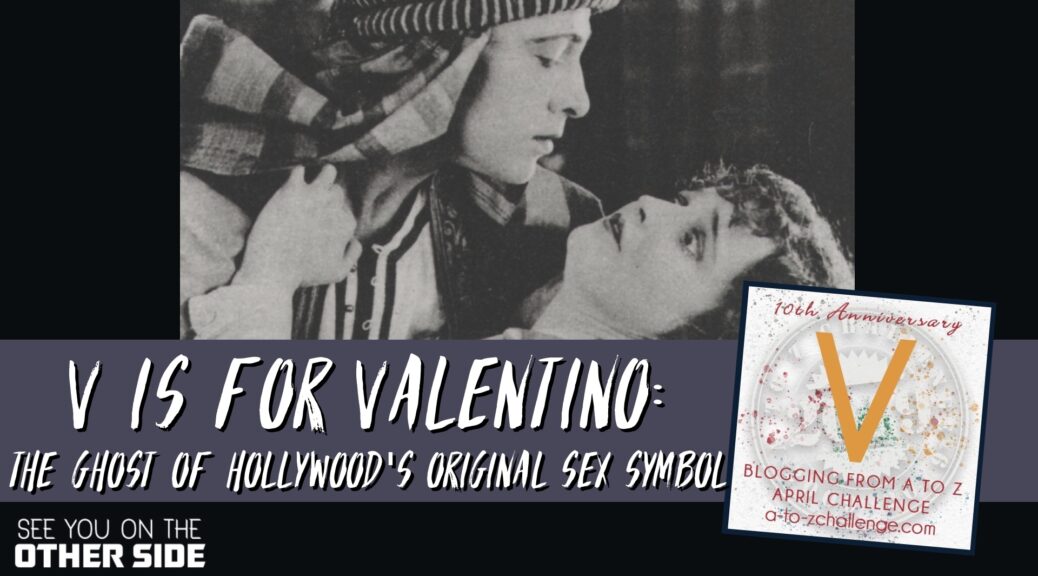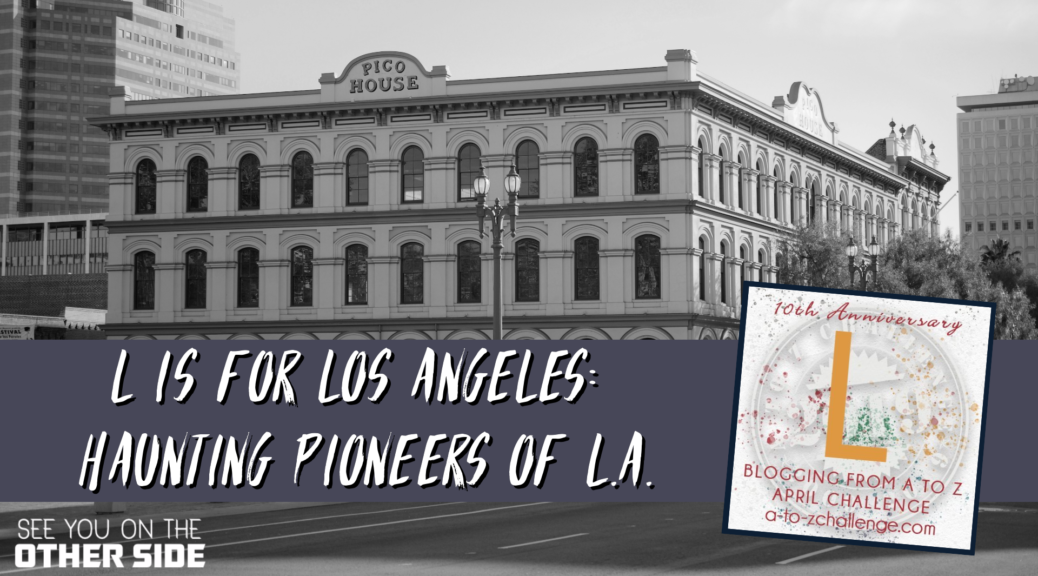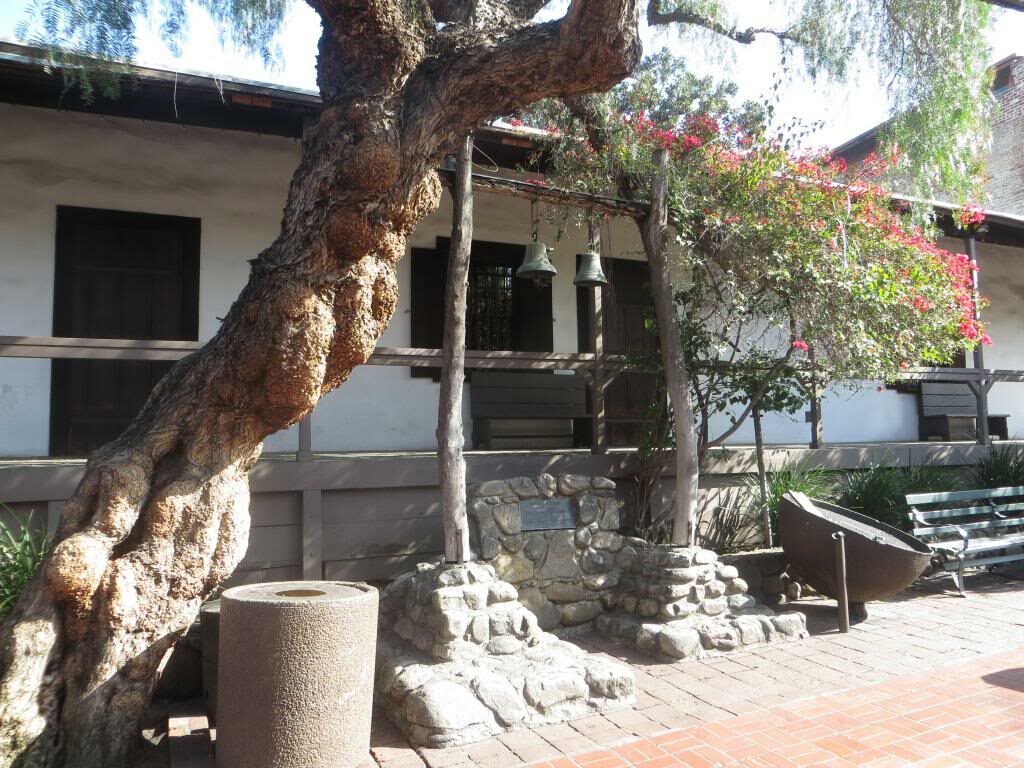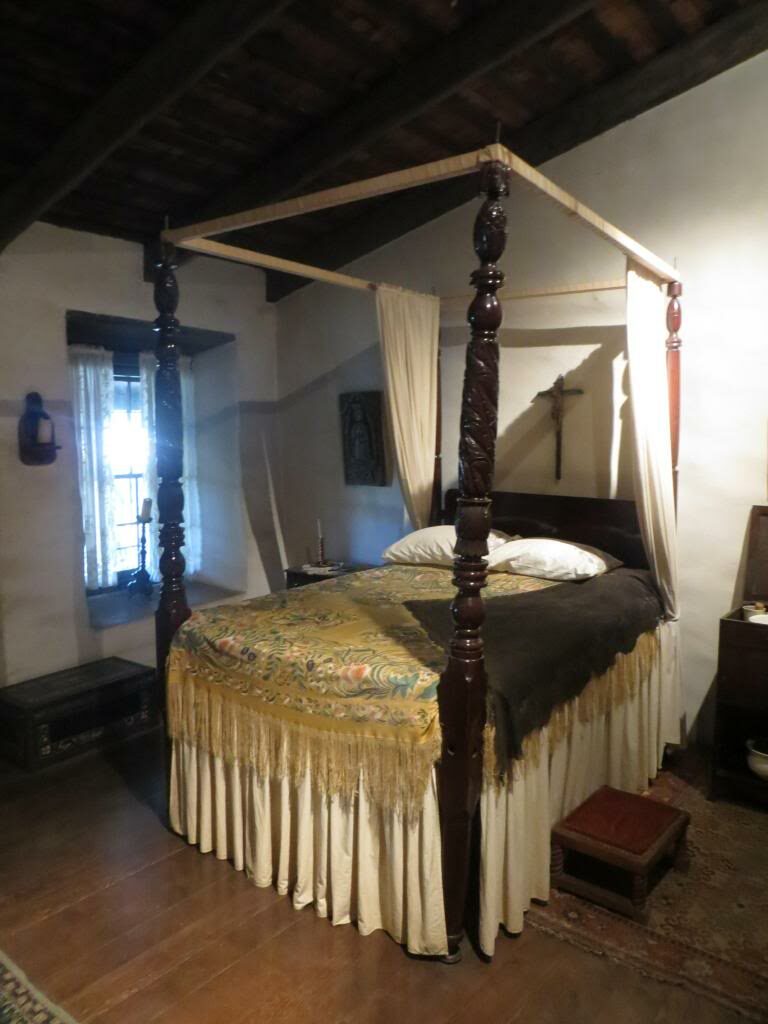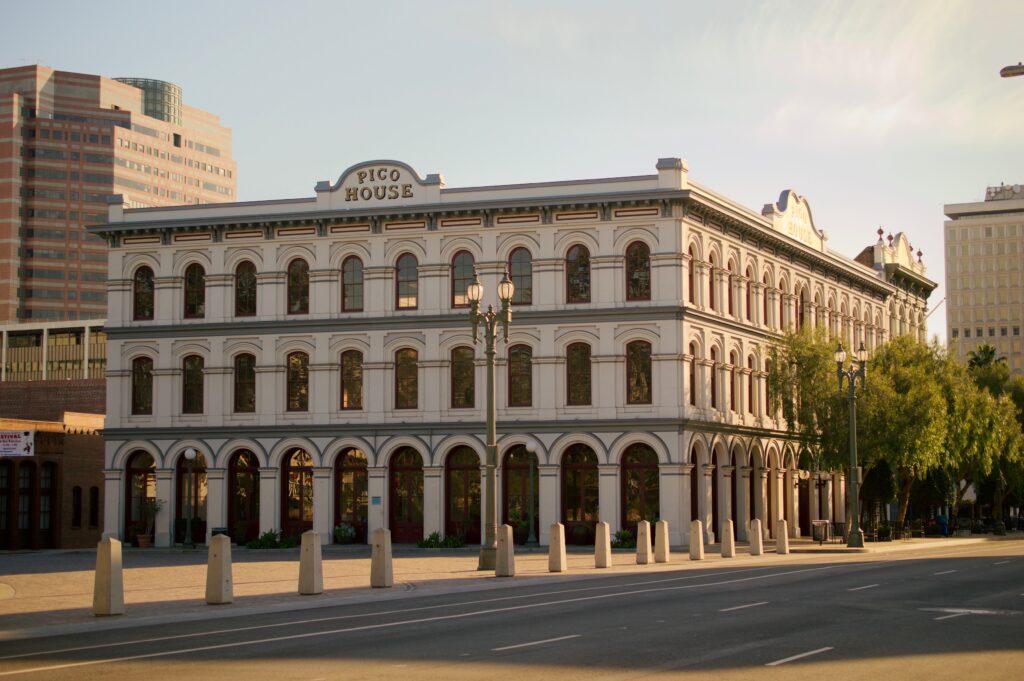I created and ran the LA Hauntings Ghost Tours where I trucked a van-load of tourists, curiosity-seekers, thrill-seekers and paranormal enthusiasts from West Hollywood, through downtown and then down Hollywood Blvd. Whether I was talking about a site we were visiting or filling the time stuck in ‘normal’ LA traffic, one name came up above all others. One might assume I would be talking about Marilyn Monroe or Charlie Chaplin, whose ghosts are reported at multiple locations, but perhaps the most well-traveled ghost I’ve ever heard of is the silent era Casanova, Rudolph Valentino.
Valentino was Hollywood’s first sex symbol. This was at a time when the concept of seeing a person move, larger than life, on screen was a new concept. The blurring of the lines between film and reality, while still tenuous where we feel we ‘know’ celebrities in some way thanks to the familiarity of seeing them repeatedly on screen, must have been even more extreme in this new era of motion pictures. That’s why his sudden and unexpected death in 1926 at the age of just 31 hit fans so hard that suicides were reported, including two girls in Japan who jumped into a volcano as a means to avoid living in a Valentino-less world. Even to this day, funeral services are held on the anniversary of his passing, some 93 years later.
With 13 of his 37 films considered ‘lost,’ we will never have a complete library of Valentino’s work, though his iconic role of the titular character of The Sheik in 1921 has transcended movie history and been the face of everything from Sheik condoms to the current mascot of Hollywood High School.
Unfortunately, Valentino’s reign as one of the top draws in all of film came to a quick end when he died in New York due to series of complications that started with punctured ulcers.
Valentino made an enormous mark on this world and this larger than life figure appears to still have more life left to experience. So, we will now take you through some of the many places Valentino still enjoys.
Though he’s so associated with Hollywood history, Valentino actually shot many of his films in New York. The Famous Players-Lasky studio commissary from the 1920s is currently open as a public restaurant called George’s. It is here that people have spied Valentino sitting at the bar, sipping martinis. The location is still a film studio, now called Kaufman Astoria Studios. This independent lot has been the long time home of Sesame Street and boasts Birdman and Orange is the New Black as some of its recent high-profile productions. If Valentino wants to stay near the action, he’s found a great place to do it!
Heading across the country to LA, Valentino found his dream home perched atop a ridge along Benedict Canyon. In 1925 he and his spiritualist costume designer wife Natacha Rambova moved into the home he would name Falcon Lair after a script that Rambova wrote, which he hoped to star in. The house looks out over Beverly Hills, but the view immediately west would’ve looked considerable different on one summer night in 1969 as the vantage point looks across Cielo Drive and into the Polanski/Tate estate where the Manson family committed one of the most famous mass murders in US history. This is irrelevant to Valentino, but fascinating to point out, nonetheless. This area is also considered a geomagnetic anomaly zone as there is unusually high amounts of EM energy emanating from the earth at this site. Those with an interest in the paranormal speculate that it’s due to all of this energy that allows for spirits to visit more easily from the other side. Perhaps this is why Valentino has been seen at this property by multiple owners and across several decades, starting immediately after his death. Caretakers were surprised to hear phantom footsteps, see door knobs turn and doors open and close by themselves. The only thing more surprising was that the normally alert dogs didn’t seem to notice or care. Perhaps to them, nothing was surprising… their owner was just walking through the house. The last person to publically acknowledge seeing the movie star was tobacco heir Doris Duke and her butler, Bernard Lefferty who saw him on multiple occasions from the 1950s through ‘80s. According to her, his appearances became less frequent as her time there drew on. She passed away in 1993 and the house itself was tragically leveled in 2006. Some remnants still exist, but the hose is essentially lost. Have later tenants experienced anything? We do not know. However, as of this writing, the home on Valentino’s property is up for sale, so we’ll keep our fingers crossed that the future homeowners will be interested in ghost hunting.
When Duke and Lefferty saw Valentino, he was wearing his horse riding attire. Just down the hill from the house stood the horse stables. Valentino’s ghost has been seen there petting and tending to living horses. One encounter was so surprising that is prompted a stable hand to quit on the spot. Though the stables are currently gone, Valentino’s ghost has still been seen in this area, sometimes accompanied by a phantom horse. Other times, it’s only the sound of a horse that’s heard.
There are stories that Valentino would ride his white horse into downtown Hollywood to drink and tango the night away at the new and swanky Knickerbocker Hotel on Ivar. Once his martini consumption became one-too-many, Valentino would get back up on his trusty steed and pass out. The well-trained horse would then walk back to Valentino’s house. How’s that for a a designated driver? It is said that Valentino can still be seen dancing the night away in the former lounge, now a Russian Restaurant. The only problem with this story is that Valentino died before this building was constructed. That said, in Chicago, we have seen the ballroom ghost Resurrection Mary relocate once her original ballroom closed down. So maybe it is possible to continue exploring new sites after death. Another unique footnote of the Knickerbocker is that this was the site of the famous Holloween night rooftop séance where Bess Houdini attempted to make contact with her late magician husband.
The other possibility is that the Knickerbocker is being confused for the nearby Hudson Apartments on Hollywood Blvd where it is rumored Valentino was involved in the operation of a speakeasy.
The corner of Hollywood and Highland is now the enormous megaplex that houses the Dolby Theter and has hosted every Academy Award ceremony since 2002. However, the location used to house a much more modest Hollywood Hotel. It is at this hotel that, after Valentino’s death, women in room 264 would report a surprise visitation and even get a phantom kiss from Valentino himself. This, or similar stories, is actually associated with a number of locations including Casa Valentino in Oxnard, CA and the Santa Maria Inn in Santa Maria, CA.
A more frightening version of the story took place in 1988 at a site that was rumored to be haunted by the Latin Lover. A woman heard someone else in the room breathing, though she knew she was alone. In moments, someone jumped into bed with her. Fearing the worst, she turned on the lights to find that she was, in fact, still alone. At this point, separated by generations, perhaps the new encounters with Valentino’s amorous ghost won’t be as welcome as they once were. This more frightening encounter, once an apartment building, is now part of the Paramount Studios complex, on 716 Valentino Pl. Since we’re talking about Paramount, it should be noted that the iconic Paramount Gates were constructed specifically to keep out Valentino’s crowds. However, he passed away before construction was complete, so they were never put to their intended use.
The legendary Musso & Frank Grill, also on Hollywood Blvd deserves its own lengthy post (if not a full feature length documentary), so, for now, I will skim over nearly all the history of this, Hollywood’s oldest restaurant, with connections to Charlie Chaplin (and his ghost), Douglas Fairbanks, Johnny Depp, Mickey Cohen, F. Scott Fitzgerald & Charles Bukowski to instead say that Valentino’s charming ghost is still on the scene, catching eyes and smiling warmly at women near the back of the restaurant.
Even Valentino’s dog, Kabar, continues to make his presence known at the Calabasas Pet Cemetery. The same cemetery that holds the remains of the MGM lion and Charlie Chaplin’s cat, visitor’s to Kabar’s grave have reported having their hands licked by a phantom dog.
And now we’re finally up to Hollywood Forever Cemetery, Valentino’s final resting. As one might expect, his funeral was an incredible affair with a procession that started in New York. Much like Abraham Lincoln’s funeral train, crowds gathered from coast to coast to watch it past, including “hundreds of cowboys and Indians” in Yuma, AZ and a horde of onlookers that broke through police lines according to the Oakland Tribune. However, the crowds had diminished by the time the funeral train reached Los Angeles. Only an estimated 200 were gathered to see the casket removed from the train in LA. The funeral was small and invite-only, however hundreds of fans lined the street for the procession from the church to the cemetery where thousands more were waiting. Flowers were dropped by an airplane over the proceedings.
Due to the shocking and sudden nature of Valentino’s death, funeral arrangements had not been made. Valentino was placed, temporarily into a crypt owned by June Mathis, who was a writer who discovered Valentino when she cast him in The Four Horsemen of the Apocalypse. However, within a year Mathis had also died suddenly at age 40 due to a heart ailment. The plan was for Valentino to eventually be placed into a memorial designed for him. However, the high spending Valentino died in debt and the stock market crash sealed the fate. There are reports that Valentino has been seen walking from the Hollywood Forever Cemetery over to Paramount Studios next door, however, Valentino is just one of many reports of many entities making that trek back to work from the cemetery.
The tiny De Longpre Park, houses one of the monuments that was originally designed for Valentino’s memorial. There are claims of paranormal activity at this location, but that pay also be associated with two deaths that have also happened here.
While Valentino may have been struck down at the height of his popularity, it seems that death has not been the end of Rudolph Valentino’s adventures!
